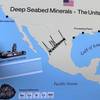U.S. oil reserves highest since 1970s
U.S. exploration and production companies are finding accumulations of crude and condensates twice as fast as they are producing them, according to statistics published on Thursday.
Proved reserves of crude stood at 30.5 billion barrels at the start of 2013.
If condensates are included, proved reserves reached 33.4 billion barrels, the highest since 1976, according to a new report from the U.S. Energy Information Administration ("U.S. crude oil and natural gas reserves proved reserves" April 10).
Proved reserves are those which owners believe with reasonable certainty can be extracted at prevailing prices using existing technology - where reasonable certainty means a probability of at least 90 percent.
"Estimates change from year to year as new discoveries are made, existing fields are more thoroughly appraised, existing reserves are produced, and prices and technologies change," EIA explains.
"Discoveries include new fields, identification of new reservoirs in previously discovered fields, and extensions, which are additions to reserves that result from additional drilling and exploration in previously discovered reservoirs," the agency adds.
Proved reserves jumped almost 11.5 billion barrels (60 percent) in just four years between the end of 2008 and the end of 2012, even as 8.4 billion barrels were extracted from existing oil and gas fields in the same period.
Reserve additions are accelerating. Oil and gas companies discovered an extra 5.4 billion barrels of crude and condensate in 2012, the largest annual increase since 1970, when 10 billion barrels of Alaskan crude were added to U.S. proved reserves.
Most discoveries were extensions to existing fields (5.2 billion barrels) rather than wholly new fields (55 million barrels) or new reservoirs within previously discovered ones (129 million barrels).
It was still much faster than production. In total, 2.4 billion barrels of crude and condensate were produced in 2012, according to the EIA, the fastest rate of output since the 1990s. But companies still managed to add new reserves twice as fast as they produced them.
Reserve additions outstripped production in both 2011 and 2012 for the first time since 2001 and before that 1970.
TRUE REVOLUTION
The impact of the shale revolution is obvious. Big reserve increases have coincided precisely with the widespread application of horizontal drilling and hydraulic fracturing to shale formations.
The largest additions to proved reserves in 2012 were in Texas (2.9 billion barrels) and North Dakota (940 million barrels).
The two states at the heart of the fracking revolution accounted for more than 90 percent of all reserve growth across the country.
Texas now accounts for 11.1 billion barrels of proved oil and condensate reserves, with North Dakota at 3.8 billion barrels.
"Proved crude oil reserves in the Eagle Ford tight oil play in southwest Texas surpassed those in the Bakken Formation in North Dakota to become the largest tight oil play in the United States," according to the EIA.
Rising discoveries have banished fears about peaking oil production. The number of internet searches for "peak oil" and related terms was highest in August 2005 but had fallen twenty-fold by January 2014, according to Google Trends (Chart 3).
MADE NOT FOUND
The report also underscores that the volume of reserves depends on prices, improvements in technology and heavy investment by the oil industry, and is not just some accident of nature.
"Nobody finds a reserve, just as nobody finds a factory," Morris Adelman of the Massachusetts Institute of Technology wrote in 1995 ("Genie out of the bottle: world oil since 1970").
"Oilmen find fields, out of which they may develop reserves over a long time," Adelman observed.
Reserve increments are overwhelmingly in old fields. "These huge new reserves in old fields are no gift of nature. They are a growth of knowledge paid for by heavy investment," he wrote.
North America's shale revolution and the surge in U.S. oil reserves is similarly no miracle. It is the result of daring entrepreneurship by the early shale pioneers and enormous investment in seismic surveying and drilling appraisal and production wells by the oil industry.
The revolution is the direct consequence of escalating oil prices between 2002 and 2012, which created the incentive and provided the cash flow for a massive and extremely risky exploration and production programme.
If the key to unlocking oil from shale was the combination of horizontal drilling and hydraulic fracturing, it would never have happened without the perseverance of quixotic pioneers like George Mitchell of Mitchell Energy or an environment of sustained high prices.
Now the North American oil industry is reaping the rewards in the form of soaring production, rising reserves and increased energy security.
By John Kemp











